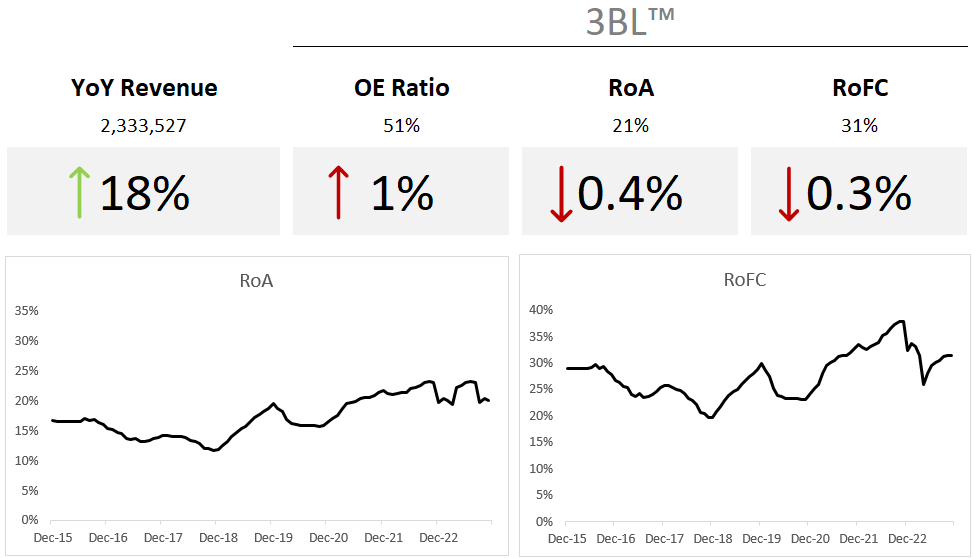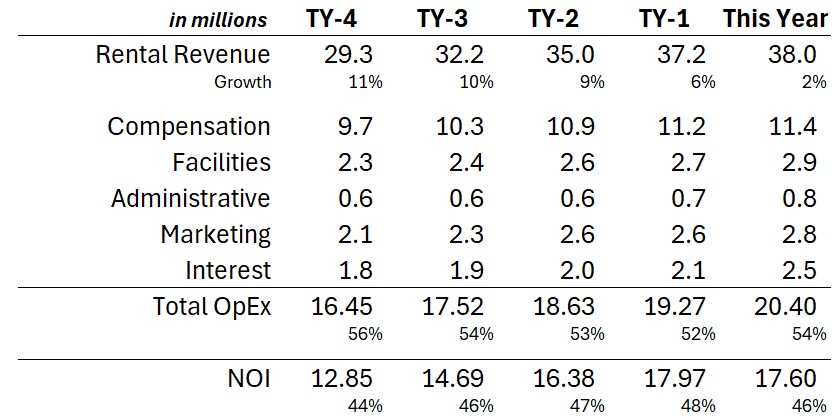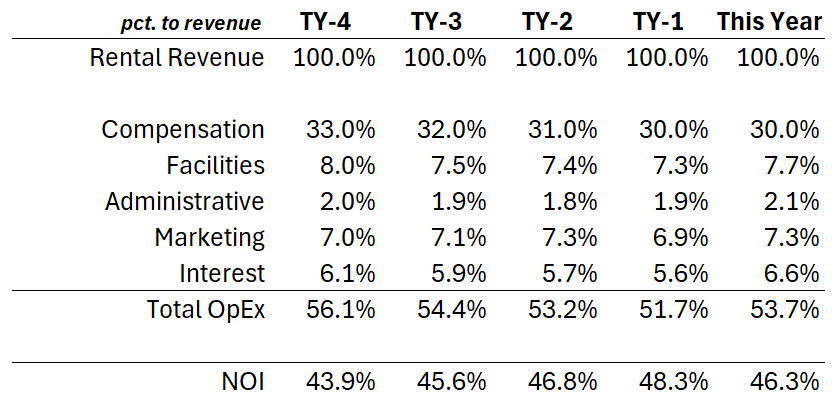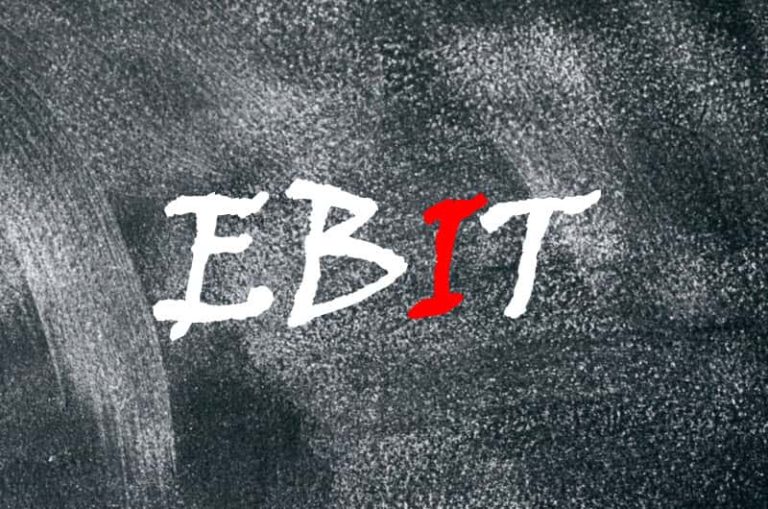I love the commercial vehicle leasing business. Whether the business serves B2B or B2C customers, it’s one of a handful of businesses I would enjoy serving as a CEO.
As I continue to track this industry on various social media platforms and user forums, I notice a disturbing trend in the financials of these organizations. They are leaving out a critical number on their P&Ls.
Every CFO who designs financials in the commercial vehicle leasing business needs to include a critical number in the upper fold of the P&L. I’ll give you a hint. It’s a number we should be monitoring weekly.
Back to Basics
In the commercial vehicle leasing business, there are very few (very) direct costs. That’s why I never show gross profit on these statements. Gross profit is a retail and manufacturing construct. In the service arena, gross profit is somewhat meaningless.
Here is what a basic P&L should look like before above- and below-the-fold enhancements:
The first thing I do in any commercial vehicle leasing business P&L is to strip out sales of the fleet and the resulting gain on loss on the transactions. That muddies the picture of true financial performance. We’re not in the dealership business, where we sell cars to make money. We’re in the leasing business. That should always be the focal point of the P&L.
Accordingly, all vehicle disposals are reflected in the equity section of the financials (along with detailed analysis outside the financials).
The key number I’m focusing on is the OpEx rate. I want my OpEx to be at or under 50% in this industry. Or, put another way, I want a 50% NOI. CEOs who know this business well can achieve this performance. However, a 50% NOI is difficult to achieve in niche-centric markets.
Unfortunately, this P&L is making me think too hard. We need to improve it.
Adding the Critical Number at the Top of the P&L
While one of my primary key numbers is reflected on the P&L above, we’re still missing a vital number that provides more context to the underlying performance of this commercial vehicle leasing business.
I’ve added this vital number below. Can you tell me what it is? Does this number provide additional context? Incidentally, I’ve added two new critical numbers. Let’s focus on the first one:
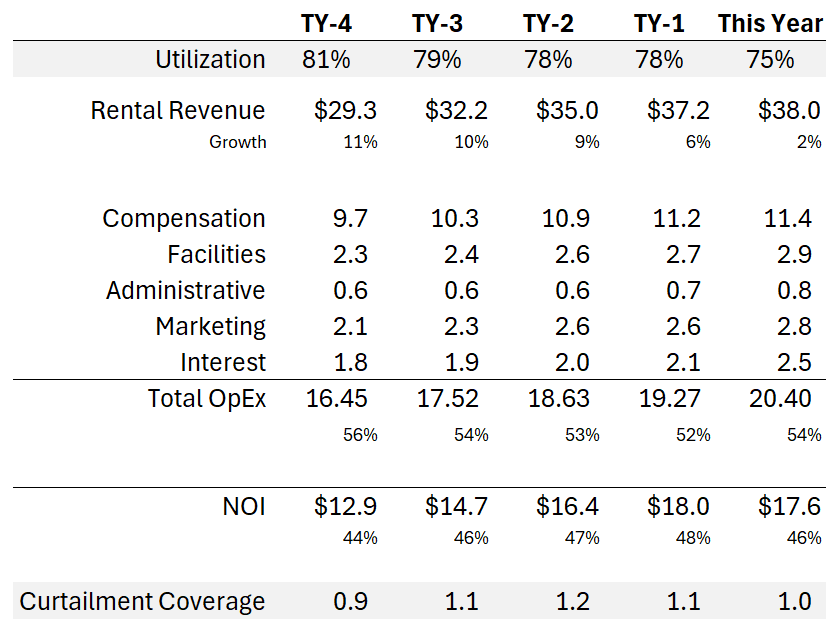
As discussed in another post, always incorporate above- and below-the-fold key numbers on the P&L. In the P&L reporting above, I always include utilization. Industry experts either report utilization based on dollars or units. The underlying math above is based on units (and daily rental days).
Even though my teams are tracking utilization daily and weekly by vehicle class, I still want to see this number front and center on the P&L. This addition allows the CEO to ask the executive team if we have a marketing problem, a sales problem, or both. Notice in the case above that utilization has been slipping over the past five years.
My sample size is extremely small, but my experience in this industry reveals that we are poor performers in marketing. We’re good at building and managing a fleet but struggle with marketing.
My recommendation is to work backward. What NOI do you want? You’ll eventually wind your way back to utilization, which will be calculated for you in your financial model. Let’s assume your desired NOI requires an 81% utilization rate. Now it’s time to find the right Don Draper to help you.
You know you have the right marketing firm on your team when they ask you in your first meeting the following two questions:
- What are your current sales?
- What do you want them to be?
Hire that firm if they ask these questions. Very few agencies start with these queries. Instead, they have preconceived ideas on how to move forward based on their core capabilities.
Small marketing agencies don’t understand that each market and niche is different. A leasing business based in Chicago with a fleet of 755 vans serving the moving industry will have a different marketing plan than the firm leasing small panel trucks in the appliance care industry in Detroit with a fleet of 450 vehicles.
Always keep utilization front and center at all times, including the P&L.
While Utilization is Critical, So Is Cash Flow
I added a second critical number on the P&L above. In my financial models, where I include my reporting in this industry, there are 3 to 4 views on operating cash flow (OCF) and free cash flow (FCF). On a side note, Buffett is wrong on free cash flow.
Since I hit OCF hard in other parts of my reporting, my below-the-fold critical number above includes a derivative of operating cash flow.
Years ago, through observation, I learned that OCF is very close to NOI. I’ll go so far as to say that NOI is a proxy for OCF. Accordingly, I always want NOI and OCF to be roughly 1.2 times my curtailment payment. Curtailment payments are like guaranteed payments. They are not optional. When my coverage ratio drops around 1.0, we’ve got a problem.
And now we come full circle. The problem is rarely excess costs. It’s utilization. More accurately, it’s a marketing or sales issue.
Only in dire situations do we sell off parts of our fleet, reducing interest expense and the monthly curtailment payment. When that happens, gross revenue potential drops. The better problem to solve is always to attack our marketing weaknesses. Remember, shoot for a 1.2 curtailment coverage ratio.
Slowing Down the Game
I love the game of baseball. One of my favorite parts of the game is watching my team eke out a victory in the 9th inning with the game on the line with its top relief pitcher.
Any relief pitcher will tell you that in his early years coming up in the league, the game was moving too fast for them. They meant that they were overwhelmed with too many details racing in their minds before, during, and after pitches to a batter. They were trying to process too much information within a few seconds between pitches.
They will tell you how they learned to slow down the game by approaching each pitch to a batter in a process-centric manner. This sounds easy. It’s not. Slowing down the game takes practice, concentration, and a great coach and catcher to keep the pitcher focused.
Great P&L reporting design has a way of slowing down the game for CEOs and their executive team. I’ve seen far too many meaningless P&Ls heavily weighted with dozens and dozens of numbers. No wonder a CEO’s brain is overwhelmed. Information overload sets in, and the game is moving too fast. They know they have a cash problem but don’t know why, based on the overwhelming data they are trying to absorb.
In the reporting above, while the underlying software allows us to drill down into the data, the top or initial view provides three vital numbers:
- utilization
- OPEX rate (and NOI margin)
- curtailment coverage ratio
Three simple numbers. A slowed-down game. This leads to faster and better decision-making.
Follow-Up Reading
The best book ever written by someone in the vehicle leasing industry is Robert Townsend’s Up The Organization. I could easily make the case that his book is among the 25 best leadership books ever.
However, I’m only aware of one book written by an industry veteran who focuses on his startup and addresses marketing, sales, and operations. The book is Why Can’t We? by Jeff Polovick. I’ve read it twice, and the author is a great human being who truly cares about the success of others around him. I highly recommend the book. I loved every minute of my 2023 interview with him.
Appendix: ROA
I’d be remiss if I did not mention ROA. ROA becomes a focal point if your fleet size exceeds 1,000 vehicles and if you have mastered marketing and operating cash flow. In smaller organizations, we have to nail down utilization with the ability to meet our curtailment payments with a cash buffer to spare. Then, we can start addressing ROA by learning to right-size the fleet or tweaking the asset base geared toward our ideal customer.
If you are curious, I take ROA and Return on Bank Capital (RBC) seriously. I have a proprietary method of calculating both, but I shoot for the 20-30 Rule™, whereby ROA should be 20% and RBC should be 30%. That 10% difference is the spread.
